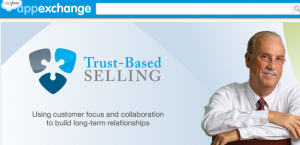8 Ways to Make People Believe What You Tell Them
How do you get people to believe you?
It sounds like a simple enough problem. In business, most of us – implicitly, if not explicitly – have one answer (or at most, two). That answer is to prove it with data; and to look polished and confident while doing it.
Particularly in complex, B2B services businesses, this is the knee-jerk response. It gets applied to sales pitches, and to handling sales objections. Consultants who advise you on giving presentations will say the same thing: marshal the data, and present it convincingly. It is the approach taken to journalistic writing (at least in J-schools). It is the approach to writing legal briefs.
In consumer marketing, we can be more skeptical. Ah, those wacky consumers, they can be conned by slick TV ads and Instagram campaigns.
But in the ‘real,’ ‘hard’ world of B2B services – not so much. Surely you can’t con sophisticated audiences like the buyers of legal services, the clients of accounting firms, or the CXOs who buy from systems and strategy firms. Surely they abide by the iron-bound rules of logic and evidence. After all, they insist on the point themselves. Surely the only way to get them to believe what we tell them is to provide them with data, delivered with practiced panache.
Isn’t it?
No. And here’s why.
Credibility
Credibility is one piece of the bedrock of trust. If people doubt what you say, all else is called into doubt, including competence and good intentions. If others don’t believe what you tell them, they won’t take your advice, they won’t buy from you, they won’t speak well of you, they won’t refer you on to others, and they will generally make it harder for you to deal with them.
Being believed is pretty important stuff. The most obvious way to be believed, most people would say, is to be right about what you’re saying. Unfortunately, being right and a dollar will get you a cup of coffee. First, people have to be willing to hear you. And no one likes a wise guy show-off – if all you’ve got is a right answer, you’ve not got much.
While each of these may sound simple, there are eight distinct things you can do to improve the odds that people believe what you say. Are you firing on all eight cylinders?
1. Tell the truth. This is the obvious first point, of course – but it’s amazing how the concept gets watered down. For starters, telling the truth is not the same as just not lying. It requires saying something; you can’t tell the truth if you don’t speak it. (A quick test: ask yourself if anyone believes the opposite of your claim. For example, “we are extremely high quality.” Does anyone advertise their so-so, or their low quality? If not, ditch the pitch).
2. Tell the whole truth. Don’t be cutesey and technical. Don’t allow people to draw erroneous conclusions based on what you left out. By telling the whole truth, you show people that you have nothing to hide. (Most politicians continually flunk this point).
3. Don’t over-context the truth. The most believable way to say something is to be direct about it. Don’t muddy the issue with adjectives, excuses, mitigating circumstances, your preferred spin, and the like. We believe people who state the facts, and let us uncover the context for ourselves.
4. Freely confess ignorance. If someone asks you a question you don’t know the answer to, say, “I don’t know.” It’s one of the most credible things you can say. After all, technical knowledge can always be looked up; personal courage and integrity are in far shorter supply.
5. First, listen. Nothing makes people pay attention to you more than your having paid attention to them first. They will also be more generous in their interpretation of what you say, because you have shown them the grace and respect of carefully listening to them first. Reciprocity is big with human beings.
6. It’s not the words, it’s the intent. You could say, in a monotone voice, “I really care about the work you folks are doing here.” And you would be doubted. Or, you could listen, animatedly, leaning in, raising your eyebrows and bestowing the gift of your attention, saying nothing more than, “wow.” And people would believe that you care.
7. Use commonsense anchors. Most of us in business rely on cognitive tools: data, deductive logic, and references. They are not nearly as persuasive as we think. Focus instead more on metaphors, analogies, shared experiences, stories, song lyrics, movies, famous quotations. People are more inclined to believe something if it’s familiar, if it fits, or makes sense, within their world view.
8. Use the language of the other person. If they say “customer,” don’t you say “client.” And vice versa. If they don’t swear, don’t you dare. If they speak quietly one on one, adopt their style. That way, when you say something, they will not be distracted by your out-of-ordinary approach, and they will intuitively respect that you hear and understand them.
What’s not on this list? Several things, actually. Deductive logic. Powerpoint. Cool graphics. Spreadsheet backup. Testimonials and references. Qualifications and credentials.
It’s not that these factors aren’t important; they are. But they are frequently used as blunt instruments to qualify or reject. We’d all prefer to be rejected or disbelieved “for cause,” rather than for some feeling. And so we come up with rational reasons for saying no, and justifying yes. But the decision itself to believe you is far more likely driven by the more emotive factors listed above.
Now – this blogpost was written about B2B services businesses. Just for kicks, try going back and reading it as being about congress and politicians. Does that shed any light on trust in government?

